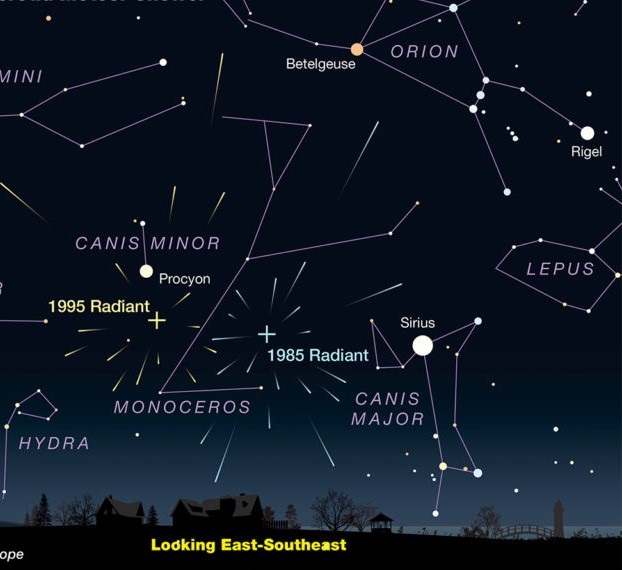SPECIAL DELIVERY
One of the nice things about stargazing is that on a large scale, so much is cut and dried. The stars and planets and their motions are well known enough that we can say with certainty where and when they will appear. On the other hand, lest things become too predictable, the cosmos sometimes serve up unexpected wonders. The Aurora Borealis, frequently visible farther north, on rare occasions makes it all the way down to the latitude of St. Louis or even farther south. Great comets, with tails ranging over a large part of the sky, put on their appearance a few times a century, with the last one well seen from the Northern Hemisphere being in 1997. So it was on Monday evening, November 11, when people all over the St. Louis area spotted a giant meteor blaze over, heading east to west. Usually, meteors are just small motes of space dust or rock that streak across the sky before they vaporize in Earth’s atmosphere, but in this case, the body was perhaps the size of a basketball and may have weighed as much as 220 lbs. Small fragments may have landed near Wellsville, MO., where scientists and others are searching. A few very lucky people, who just happened to be outside just before 9 o’clock on a cold night in the aftermath of an unusual mid-November snowstorm, caught the fireball live. I was not one of them. Many more found it on their home security camera video. Fortunately placed was the St. Louis EarthCam, which broadcasts live images of the Gateway Arch taken from the Malcom W. Martin Park
across the Missisippi River. The spectacular video is here.
Many people are aware that along with the sporadic “shooting stars” that can be seen at night, there
are also meteor showers in which the Earth intersects with the orbit of a comet that has strewn debris over many cycles. Far and away the best meteor showers to view are the Perseids of August and the Geminids of December. This year, the Perseids were severely diminished by moonlight, and the Geminids will be. Under better circumstances, as many as 1-2 meteors a minute can be seen under very good conditions, from dark sky locations well away from St. Louis, with much fewer seen from near the city. In spite of what you may see on the internet, all other meteor showers, with rare exceptions, produce much fewer meteors, and to be honest, I have spent little time watching them. However, I wanted to share the possibility of a large shower the evening of November 21- no promises or guarantees, please!
Noted scientists Peter Jenniskens and Esko Lyytinen have noted that a normally obscure meteor shower, the Alpha Monocerotids, may produce a shower with a very sharp peak, around 10:50 pm on Thursday evening, November 21. For a period of 15-45 minutes, 100 or more meteors may appear to radiate from a point low in the east southeastern sky, to the lower left of Orion’s belt, near the star Procyon. To the good side, there will be no moonlight at that hour, while to the bad, the radiant point will be quite low in the sky, and only those meteors moving upward from that point may be spotted. The east coast of the United States, or better yet Europe, will have a ringside seat.
If skies are clear that night and you would like to accept this challenge, I encourage you to bundle up and bring a lawn chair. Probably come out as early as 10 or 10:15 pm to be on the safe side. Find a spot with an open view to the east, preferably heading east of St. Louis well into Illinois, away from the city lights. Concentrate your gaze halfway up in the east or higher, where the sky will be clearer and darker.
According to Sky & Telescope magazine, the parent comet of the Alpha Monocerotid shower may come by as rarely as once every 500 years, and no match to historical records has yet been made. At one of the more recent orbital passes, it left a narrow stream of debris, with which the Earth is predicted to cross this year. In most years, the merest handful of meteors are seen when the Earth crosses the orbit of this yet mysterious comet. If any of you, near or far, see the shower, e-mail me at richard_fefferman@nps.gov.

Looking southeast, about 10:50 pm, November 21. Nobody knows how many meteors, if any, will be seen, but the Alpha Monocerotid radiant points in 1985 and 1995 are indicated on the map. If there is a “storm” of meteors, it will probably appear to come from this general area. Courtesy Sky & Telescope magazine.
